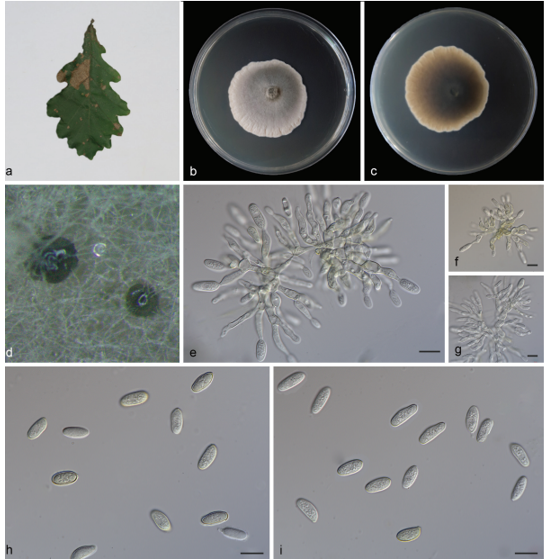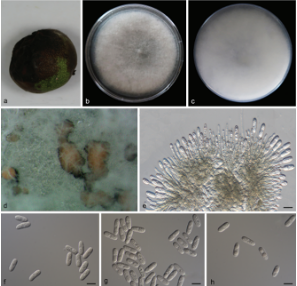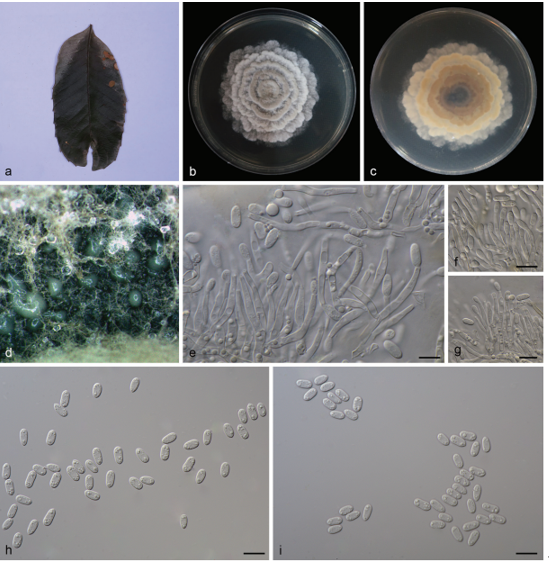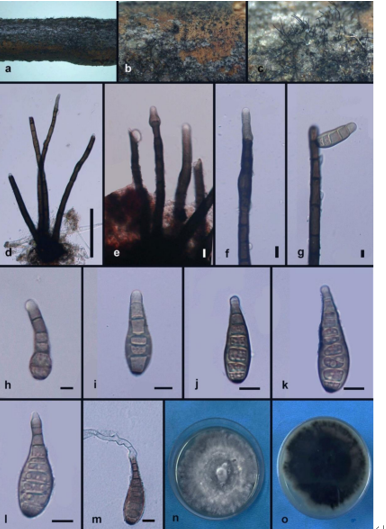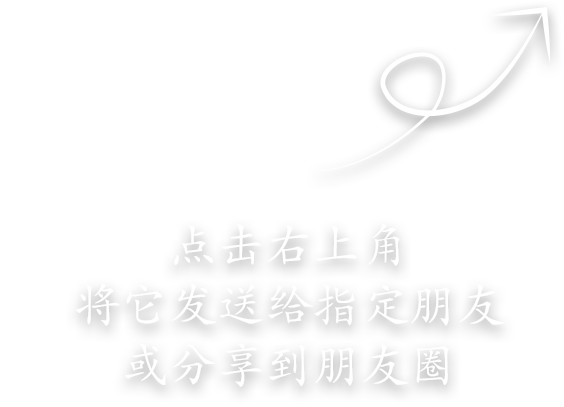Tomentella storea H.S. Yuan & Y.C. Dai 2020
Index Fungorum number: IF555775; Facesoffungi number: FoF 05646
Holotype: CHINA, Liaoning Province, Qingyuan County, Experimental Station of Forest Ecology, on rotten angiosperm wood debris, 22 October 2015, Yuan 10749 (IFP 019330, holotype); Huanren County, Laotudingzi Nature Reserve, on rotten angiosperm wood debris, 20 October 2015, Yuan 10623 (IFP 019329); on fallen angiosperm branch, 20 October 2015, Yuan 10638; 21 October 2015, Yuan 10702; on fallen angiosperm twig, 21 October 2015, Yuan 10692; Kuandian County, Baishilazi Nature Reserve, on bark of rotten angiosperm branch, 22 October 2015, Yuan 10717; on rotten angiosperm wood debris, Yuan 10729.
Morphological description
Basidiocarps annual, resupinate, separable from the substrate, mat-like, without odour or taste when fresh, 0.8–1.2 mm thick, continuous. Hymenophoral surface smooth to indistinctly granulose, dark brown (6F5–8) and concolorous with subiculum when dry. Sterile margin often indeterminate, byssoid, dark brown. Rhizomorphs absent. Subicular hyphae monomitic; generative hyphae mostly clamped and occasionally simple septate, thick-walled, rarely branched, 4–5 μm diam, occasionally collapsed and encrusted, yellowish orange in KOH, cyanophilous, inamyloid. Subhymenial hyphae clamped, thin-walled, occasionally branched, 3–6 μm diam; hyphal cells more or less uniform, yellowish orange in KOH, acyanophilous, inamyloid. Cystidia absent. Basidia 20–35 μm long and 4–9 μm diam at apex, 5–8 μm at base, with a clamp connection at base, clavate, stalked, sinuous, without transverse septa, yellowish orange in KOH, yellowish brown in distilled water, 4-sterigmate; sterigmata 2–4 μm long and 1–1.5 μm diam at base. Basidiospores thick-walled, (5.5–)6.1–7.1(–7.5) × (5.5–)5.7–6.6(–7) μm, L = 6.66 μm, W = 6.21 μm, Q = 1.06–1.12 (n = 60/2), irregularly globose or lobed in frontal view and ellipsoid in lateral view, echinulate, greyish yellow in KOH, golden yellow in distilled water, cyanophilous, inamyloid; echinuli usually isolated, sometimes grouped in 2 or more, up to 0.8 μm long.
Habitat: On rotten angiosperm wood debris.
Distribution: In China.
GenBank Accession: ITS: KY686245, KY686244; LSU: MK446416, MK446415.
Notes: Tomentella baroensis Yorou is similar to T. storea by having thick basidiocarps (up to 2 mm thick), a smooth to indistinctly granulose hymenophoral surface, the absence of rhizomorphs and cystidia, and echinulate basidiospores of approximately the same shape. However, the former species is differentiated by dull red to greyish brown basidiocarps adherent to the substrate, the absence of simple septa in subicular hyphae, and bigger basidiospores (8–11 × 7.5–9 μm, Yorou et al. 2013). T. agbassaensis Yorou resembles T. storea by having brown, continuous basidiocarps separable from the substrate, a smooth and granulose hymenophore, clamped, thick-walled subicular hyphae and echinulate basidiospores of approximately the same shape and size. However, it differs from T. storea by having rhizomorphs in the subiculum and basidiospores with short echinuli (Yorou et al. 2012).
Reference: Hai‑Sheng Yuan1,2· Xu Lu1,2 · Yu‑Cheng Dai3 ·
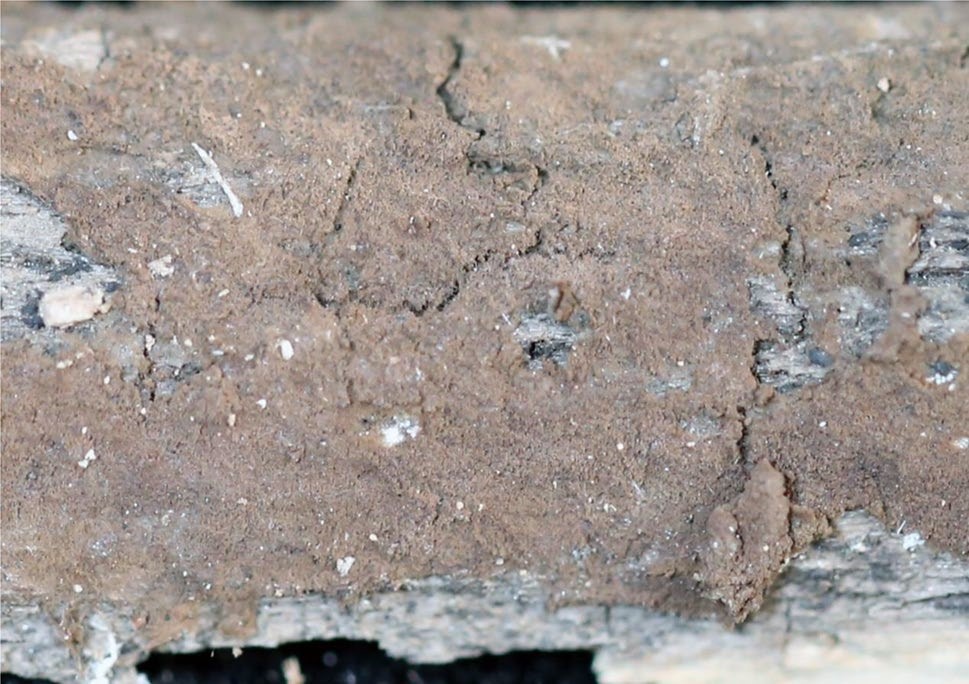
A basidiocarp of Tomentella storea (IFP 019330, holotype)


